Jesus Box
Mark 2:18-22
Listen and reflect on this song by Hillsong Worship called New Wine.
Modern Orthodox Jewish Clothing Traditions
MEN
The typical style of dress of Orthodox Jewish men has historically been a turban or hat, a tunic, a prayer shawl, and sandals in the summer. This has manifested itself and become more nuanced in different sects of Judaism. Below are some of the traditional styles that you might notice walking the streets of modern Jerusalem.
Peyot – Many Orthodox Jewish men and boys have long side curls in their hair. This is based off the Levitical command in Leviticus 19:27, “You shall not round off the hair on your temples or mar the edges of your beard.”
Kippahs or yarmulke – These are the small, rounded skullcaps that at worn at all times by Orthodox Jewish men and boys. Though not based from any biblical passage, they are a symbol of reverence for God and a reminder that God is above them and watching over their every thought and action. It has also served as a way of distinguishing them from non-Jews, and a statement against assimilation in the many places they have lived.
Tallit – Under their shirts, Orthodox Jewish men and boys wear a poncho called a tallit katan (small cloak). During times of prayer, services, and holidays, many wear a prayer shawl (tallit) over the top of their clothing instead, which serves the same purpose. From each of the four corners hang tassels or fringes (tzitzit). Read Numbers 15:37-40, for the command the Lord gave Moses as the origination of this tradition. They serve as constant reminders of their obligations to live obediently to God.
Tefillin – There are also known as phylacteries or small wooden boxes with leather straps that are bound to the forehead and arm during prayer. They contain small scrolls with three passages from the Torah (Exodus 13:1-10, Deuteronomy 6:4-9, Deuteronomy 11:13-21). The binding of these to the body symbolizes the bind of oneself to God.
Hats – There are many different styles of hats worn by Orthodox Jewish men, particularly on Shabbat, festivals, or special occasions. The style of hat worn is generally based on the Hasidic sect of which you are a member.
WOMEN
Jewish women and young girls traditionally where modest dresses with long sleeves. More traditional married women also wear a head scarf (tichel), or hat of some kind when they leave the house. Some women choose to wear a kippah, similar to the men. While complete veiling is not common, there are some women who still practice fully covering the face.
Pictures
These various styles of dress are particularly obvious at the Western Wall where Jews go to pray. In the pictures below, you will notice some Jews are not as strict in clothing and others significantly more traditional.
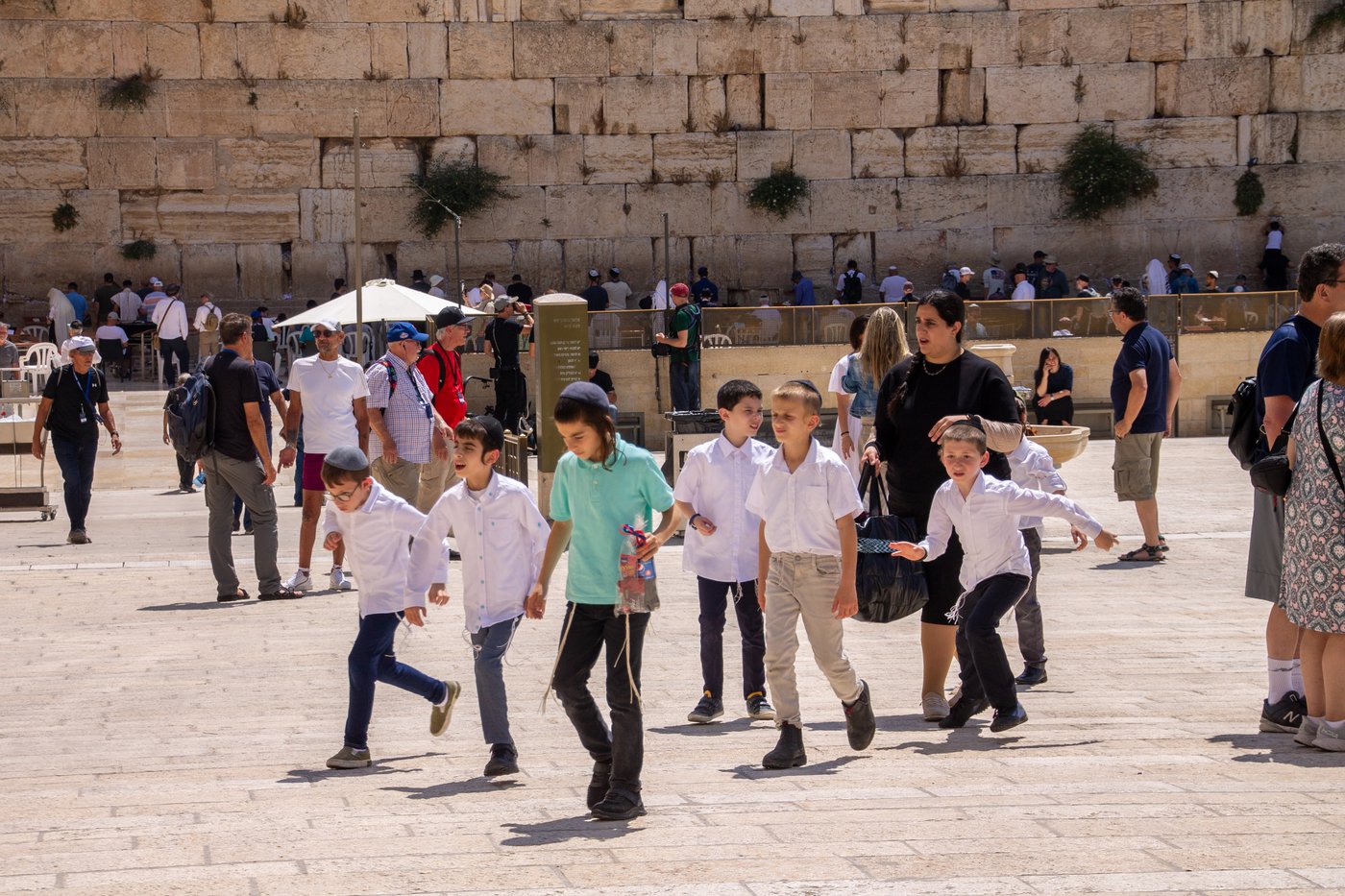 Young Jewish boys at the Western Wall wearing their tassels and kippahs. A few have also grown out the side curls.
Young Jewish boys at the Western Wall wearing their tassels and kippahs. A few have also grown out the side curls.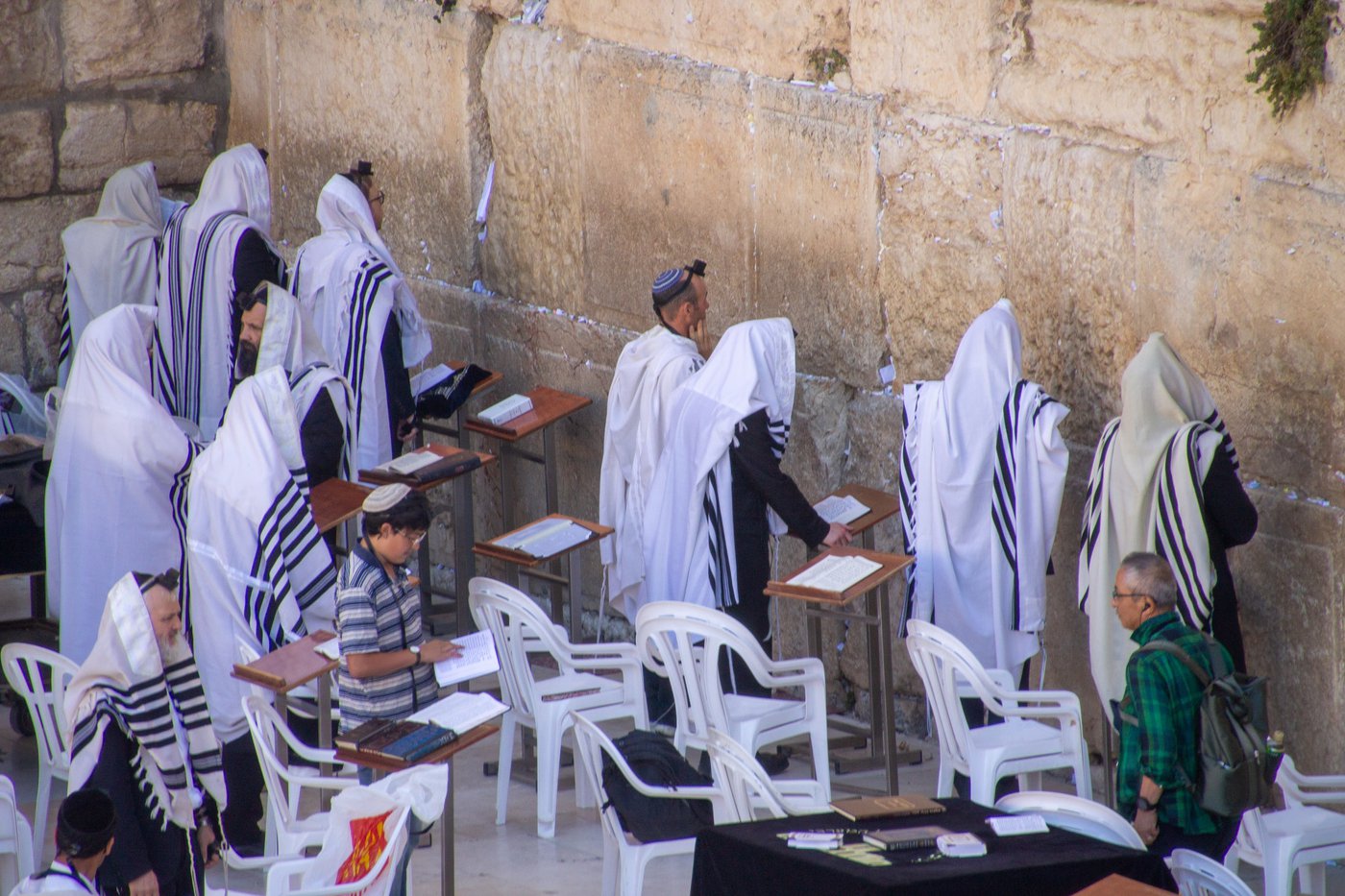 Jewish men at the Western Wall with prayer shawls and Phylacteries bound to their foreheads.
Jewish men at the Western Wall with prayer shawls and Phylacteries bound to their foreheads. Notice the variety of dress at the Western Wall. The black leather strap wrapped around the forearm is binding a phylactery to his arm.
Notice the variety of dress at the Western Wall. The black leather strap wrapped around the forearm is binding a phylactery to his arm.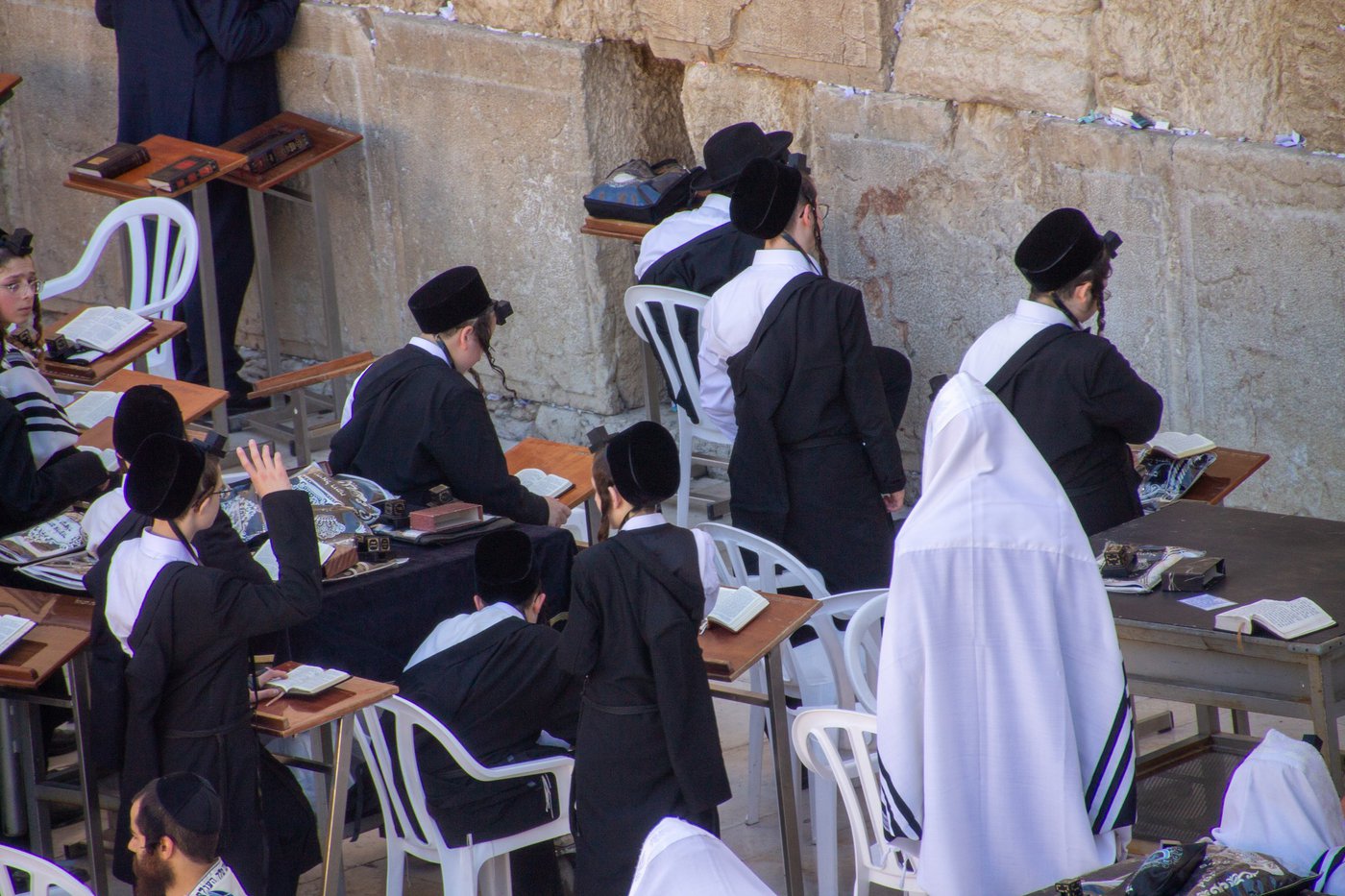 Young Jewish men praying at the Western Wall.
Young Jewish men praying at the Western Wall.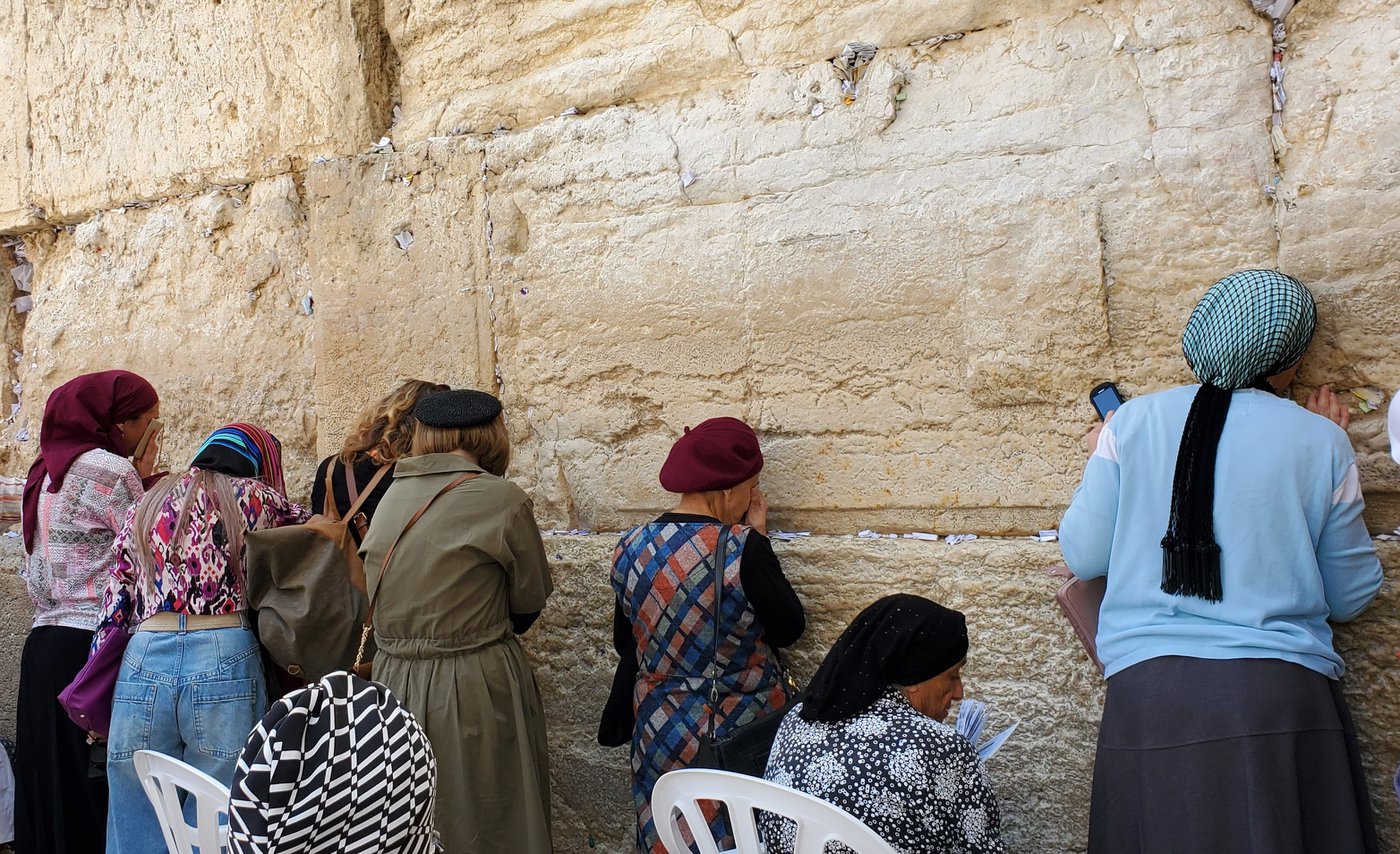 Jewish women praying at the Western Wall.
Jewish women praying at the Western Wall.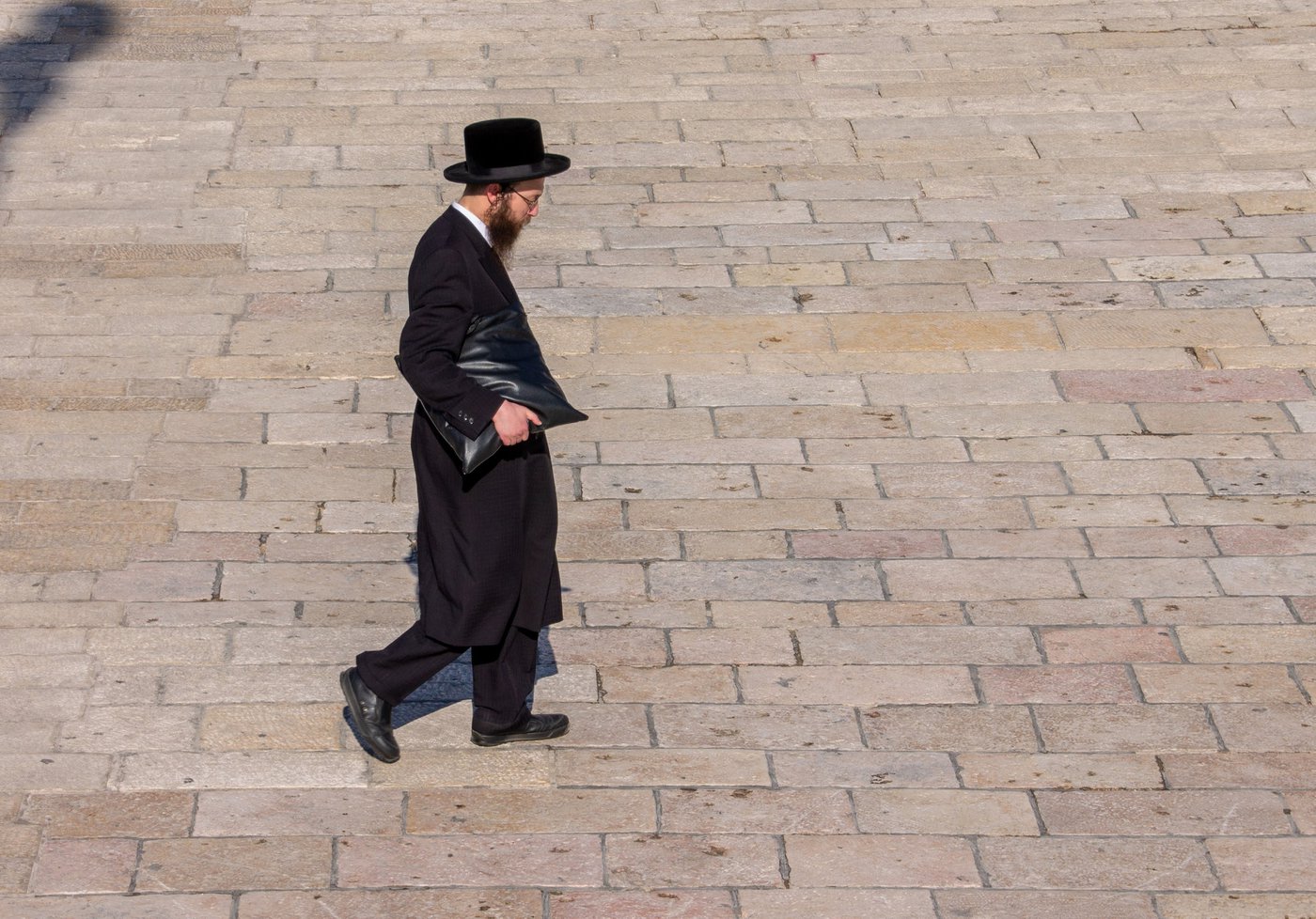 Common everyday dress for Orthodox Jewish men.
Common everyday dress for Orthodox Jewish men.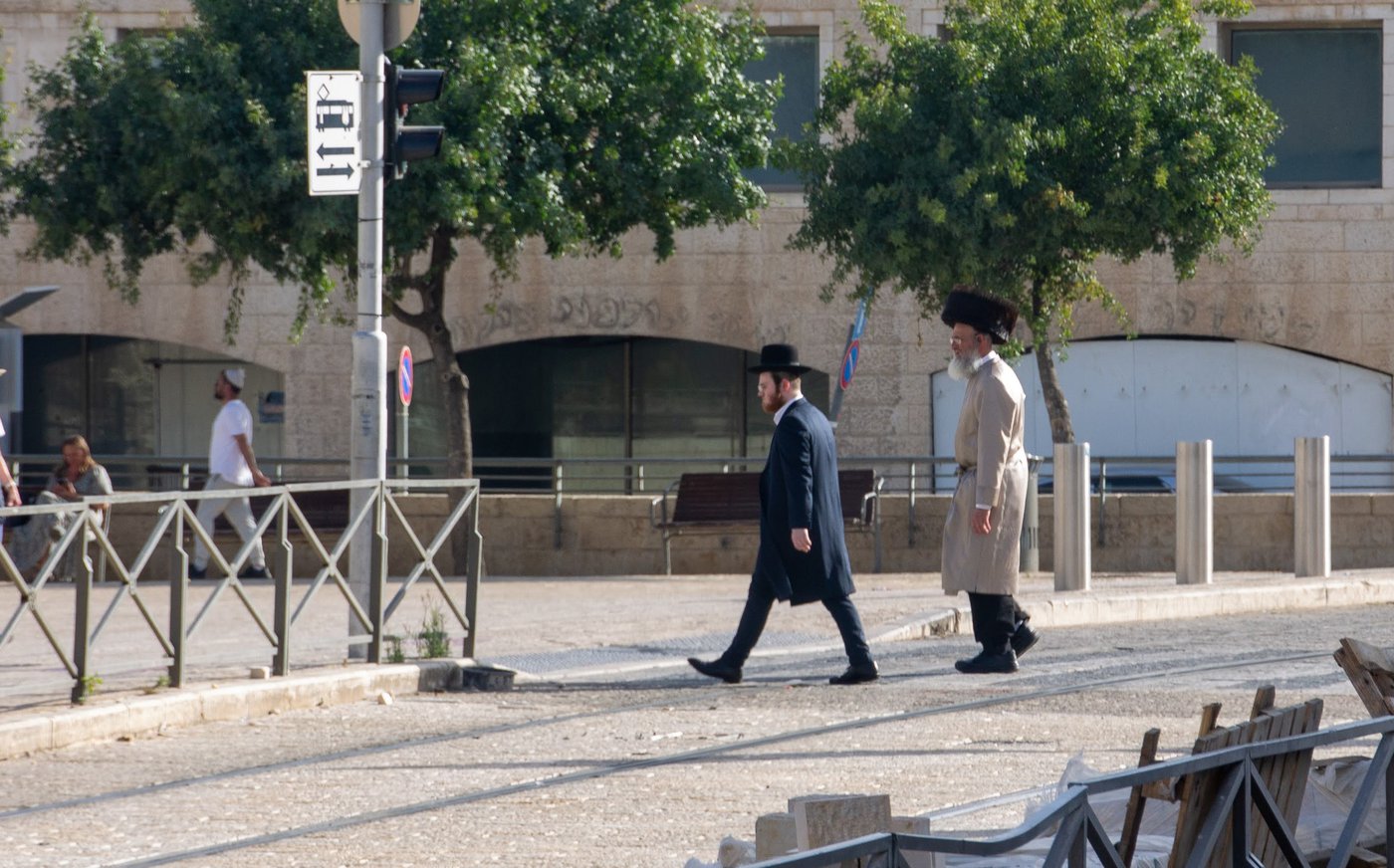 Two different styles of dress and hats that are common to see on Shabbat.
Two different styles of dress and hats that are common to see on Shabbat.

